
THE 13 SCARIEST PLACES IN CARRUTHERSLAND
1. Glenluce Abbey
J Maxwell Wood wrote of a spine-chilling tale, current in 1911, of a man whose bold ways pushed him over the edge. Apparently, he uncovered the skeleton of 13th century wizard and alchemist Michael Scot. Scot reputedly lived at the Abbey and legend has it that he was buried there along with his collection of alchemical books.
Apparently the man was confronted by the shocking sight of Scot’s upright skeleton, the impact of which drove him mad. During his time at the Abbey, Scot purportedly cast spells to lure the plague inside before walling it up…

2. Dunskey Castle
The brooding clifftop setting of Dunskey Castle gives off a wild, remote and rugged feel.
Built by the Adairs of Kilhilt, Dunskey is a large 16th century tower house consisting of four storeys and features a vaulted basement and three cellars, one of which was used for wine.
There was once an older fortification on this spot but it was burnt down as an act of vengeance. One grim event concerns the Abbot of Soulseat Abbey, who was imprisoned and tortured in the castle. Dunskey is said to have a brownie, (a creature of legend in Scottish folklore) and is haunted by a nurse maid who allegedly dropped her charge from one of the windows onto the beach far below. Is it a sense of guilt that won’t let her rest?

3. Ringcroft of Stocking
There is a mysterious legend concerning one of the most baffling and well recorded occurrences of poltergeist activity in Scotland.
The legend concerns a wiry and skeletal tree, the last that remains of a small wood marking the old Ringcroft of Stocking, a farm tenanted by Andrew Mackie in 1695.
It is said that when the last ‘Ghost Tree’ falls, the poltergeist will return. During those terrifying months in 1695, Mackie’s family were attacked by unseen hands, stones pelted and fires raised. A strange apparition of a boy was witnessed and it was suggested that witchcraft might be to blame for their grave misfortune.
The Reverend Alexander Telfair was called in to help and carefully documented the events complete with witness statements from a range of locals. We can only hope the tree remains in good health for many years to come…

4. The A75 Ghost Road
Renowned the world over as a paranormal hotspot, the A75, which runs from Gretna in the east to Stranraer in the west, is believed to be the most haunted road in Scotland.
There are two key areas on Scotland’s Ghost Road where haunting activity is at its most frequent.
One stretch is located on the old A75 which runs from Annan to Gretna via Eastriggs; the other is a wide, straight section of road known as the Kinmount Straight.
Eyeless spectres have been reported along with a grinning creature in the trees, a bodiless pair of legs and multitude of phantom hitchhikers. Perhaps the road’s most famous incident occurred in the early 1960s when the Ferguson brothers witnessed all manner of weird apparitions; from a hen flying at their windscreen to ‘great cats, wild dogs, goats, more hens and other fowl, and stranger creatures’.
In more recent times, an elderly man in tweeds has been seen standing by the old Kinmount bus shelter.
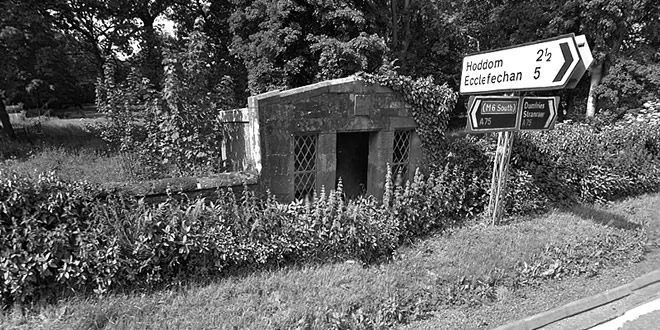
5. Kirkmadrine Church
Approached from a bonnie woodland pathway, Kirkmadrine Church is a deeply spiritual site; it is here that a collection of ancient Christian stones are housed, the oldest outside of Whithorn.
The current church replaced a medieval building and the stones, including a memorial to Bishops Ides, Viventius and Mavorius, date from around 450 AD, can be viewed through a glass panel.
The church is surrounded by a graveyard with some interesting historic grave markers. Visitors to this otherworldly place report being suddenly spooked by an unseen presence and the eerie sense of being watched…

6. Lochmaben Castle
The crumbling ruins of Lochmaben Castle are bordered by Castle Loch, a vibrant haven for wildlife. Now extremely ruinous, this once powerful fortress has witnessed its fair share of bloodshed.
Parts of the castle date back to the 13th century, home of Capt John Carruthers, and it boasts a picturesque double archway which still stands today. Lochmaben Castle and its surrounding woods are thought to be haunted.
More on Capt John Carruthers and the Royal Castle of Lochmaben: https://carrothersclan.wordpress.com/tag/john-carruthers/
People have heard drumming sounds and the unmistakable click of horse’s hooves.
However it’s not just ghosts that are said to linger at the castle; reports concern a strange nocturnal creature described by one key witness as a ‘vampire’. There is in fact a vampire legend dating back to the 12th century – some people believe it relates to the powerful Bruce clan and that a family member was bitten by this ravenous revenant!
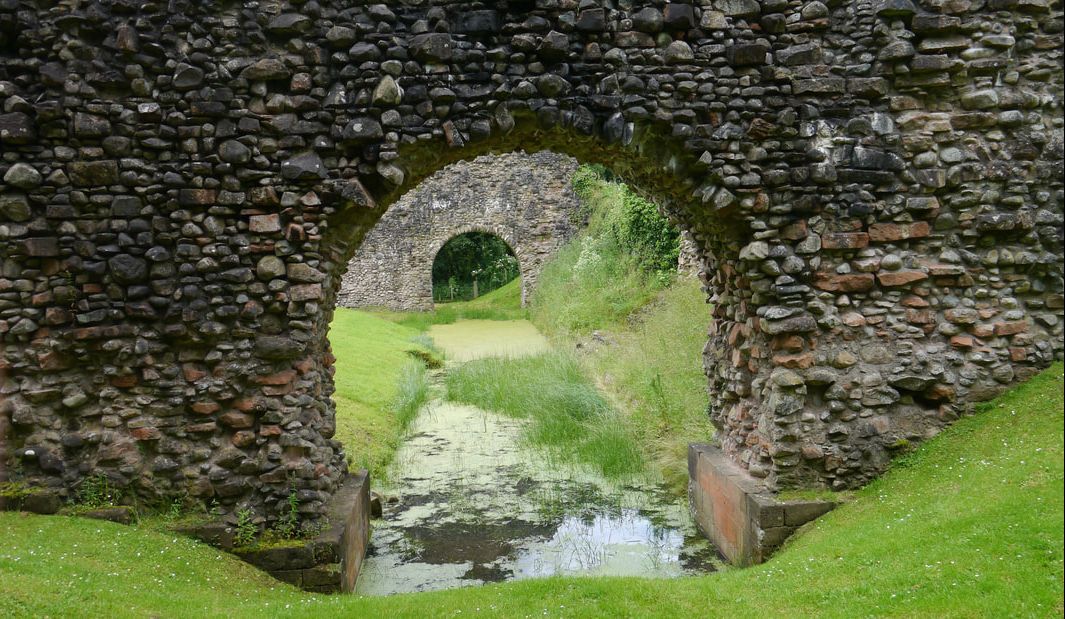
7. Threave Castle
The much-photographed Threave Castle sits amidst an island in the River Dee; a powerful contrast between romantic scenery and imposing fortress.
The 14th century keep emits a sense of foreboding and internally, the dank tomb of the pit-prison gives a flavour of darker times.
Built by Archibald the Grim, (a name given due to his ghastly grimace during battle), Threave witnessed the beheading of Sir Patrick MacLellan of Bombie. It was also linked to the infamous Black Dinner when William, sixth Earl of Douglas and his brother David, set out from Threave for Edinburgh Castle where they were brutally executed.
One disturbing feature of the castle is its historic Gallows Knob; the Douglases once boasted it was never without a tassel! Some visitors to the castle report unexplained breathing noises, feeling ill at ease and voices with no apparent cause…
More on the Carruthers at Threave Castle: https://carrothersclan.wordpress.com/2019/06/28/how-the-carruthers-obtained-threave-castle/

8. Spedlins Tower or Jardine Hall
Spedlins is a massive 15th century tower house said to be haunted by unfortunate miller, James ‘Dunty’ Porteous, who met a horrifying end in the castle dungeon. Having crossed words with Sir Alexander Jardine, who owned Spedlins in 1650, James was thrown into the pit-prison, known as ‘The Little Ease’ where his last days would be drawn out in the agonies of starvation.
Sir Alexander had to rush off urgently to Edinburgh and forgot to leave the dungeon key with his servants, only realising once he’d arrived in the Capital. Unfortunately his courier arrived back at Spedlins too late and discovered Porteous dead; some say that in desperation, he’d gnawed at his own hands and feet. Dunty’s restless spirit returned to haunt the Jardine Clan; moaning and groaning was heard and at one point he threw Sir Alexander Jardine and his wife out of bed!
The only way they could pacify him was by storing the large black family bible in a recess near the prison…

9. Theatre Royal, Dumfries
The beautiful Theatre Royal opened its doors to the public for the very first time on September 29th 1792 and is now Scotland’s oldest working Theatre.
Among those who have treaded the boards at this magnificent historic gem are J.M. Barrie and John Laurie and of course, the great Bard Robert Burns has strong connections – he was one of the subscribers to build a theatre here in Dumfries.
With powerful emotions come deep imprints and it would seem that the theatre has many old ghosts within its walls.
A lady in green is said to haunt the theatre; opera singing has been heard and the bizarre legend of a woman falling from the balcony and killing herself and another gentleman is told to this day.
One staircase is particularly eerie and people using it prefer to get up and down as quickly as possible!

10. Carnsalloch House
In its current decrepit state, Carnsalloch is the classic vision of a haunted house; broken, derelict and creepy. But there is far more to this fascinating mansion than an empty shell.
Dating back to the 12th century, the ancient lands of Carnsalloch were once linked to the Knights Templars. There followed hundreds of years of Maxwell ownership before London chemist Alexander Johnston built the existing mansion, a fine Palladian villa, in 1759.
Carnsalloch once housed a Leonard Cheshire Care Home and now stands forlorn with a somewhat uncertain future.
A ghostly Pink Lady has been witnessed along with reports of a headless horseman said to ride the drive.
Visitors report thundering horse’s hooves, uncanny feelings and a strong sense of foreboding emanating from the grounds…
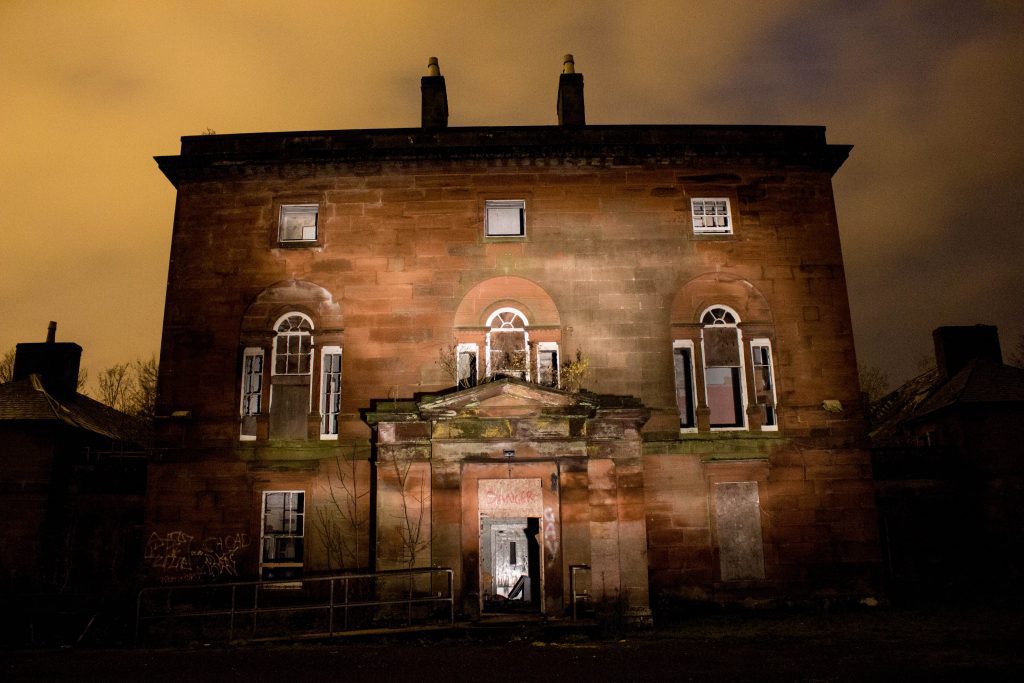
11. Corsock Moor
The wild and remote moorlands near Corsock are just the sort of place you’d expect to find a ghost.
Many years ago, as darkness fell, a drover arrived at Corsock Hill. The weather took a turn for the worse and a dramatic storm erupted. As the lightning cut the sky with vivid shards of light, the drover sought shelter in a hedge. A little later, he headed back out and his dog started behaving in a curious manner.
The drover looked for an explanation and shortly after, heard the skirl of pipes carrying towards him on the wind. The piping became wilder and the wee dog scurried closer to his master. In a sudden flash of blue light, the piper appeared before him playing as if possessed – he was headless! More thunderous claps ended the strange incident and the drover was later told he’d seen the spirit of a murdered piper from Patiesthorn.
So how did he play the pipes? Your guess is as good as mine!
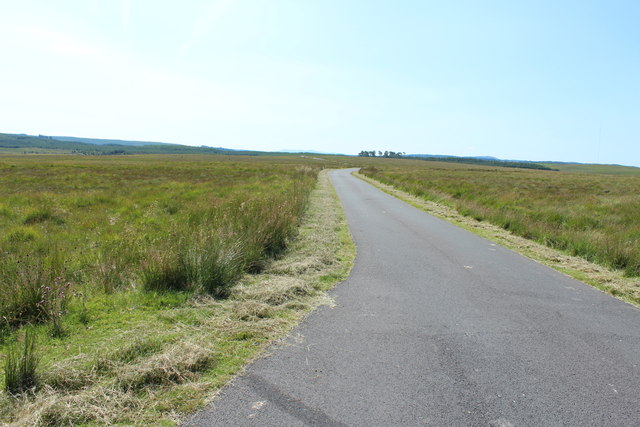
12. Buckland Bridge
Buckland Glen near Kirkcudbright is purportedly haunted by the ghost of a headless woman.
Once upon a time, a farmer from Monkland was travelling home to Kirkcudbright with a young farm hand. Around the stroke of midnight; he approached the small bridge over Buckland Burn. After crossing it, his pony suddenly took fright nearly hurling the stunned farmer from his saddle. The boy who was accompanying him spotted something close-by – the farmer confirmed it was none other than the headless woman – they took an alternative route home!
The story goes she was murdered in the Glen but returned to do a good deed. They later heard some men were hiding in the Glen waiting to rob the farmer – had the lady not warned them, we can only shudder at what might have happened…

13. Site of old Buccleuch Street Prison, Dumfries
When you consider the old prison site in Buccleuch Street witnessed both the last public execution of a man and woman in Scotland, you might not be surprised to learn these dark events seem to have left a trace.
Visitors to the rear of the building report a heavy atmosphere along with breathing sounds, ethereal hand-holding and mysterious lights appearing during stories of its grim past.
The prison was demolished many years ago to make way for the Clydesdale Bank during which time bones of the executed were unearthed. Could the sickening anticipation of death still resonate long after those hanged there have turned to dust?
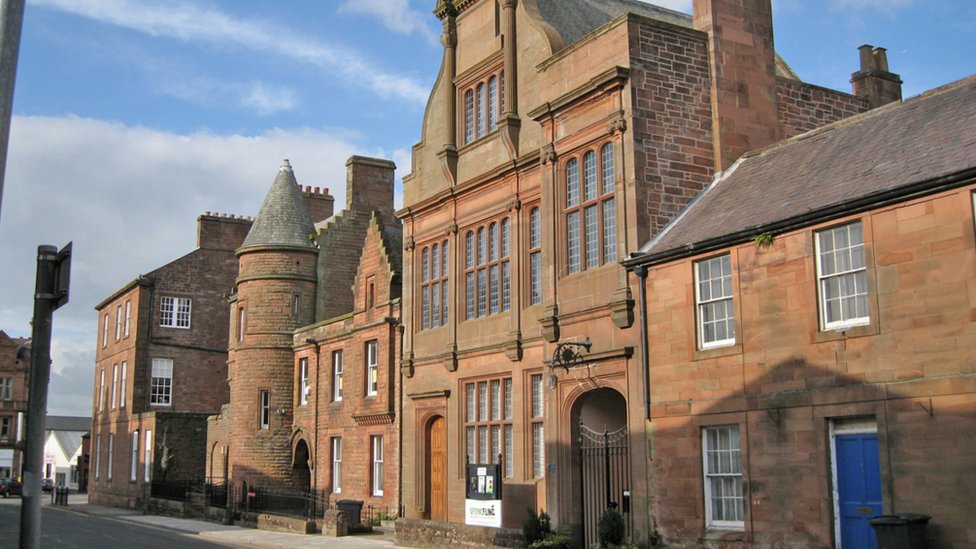
Mostly Ghostly Investigations are Dumfries and Galloway’s first paranormal investigation team and creators of a range of well-researched ghost and local history tours

Mostly Ghostly Investigations have a determination to explore and investigate the unknown.
While exploring innovative ways to fund their research visits, they had the idea of developing a ghost walk for Dumfries. The team have since developed and diversified, creating a number of exciting tours showcasing elements unique to our region.
Their philosophy is that a good story well told needs little in the way of artistic license; each event takes months of careful research to create a truly authentic experience.

Preserving Our Past, Recording Our Present, Informing Our Future
Ancient and Honorable Carruthers Clan Int Society
carruthersclan1@gmail.com carrothersclan@gmail.com

NEIL CARRUTHERS SCOTLAND
CLAN CARRUTHERS INT SOCIETY CCIS HISTORIAN AND GENEALOGIST

You can find us on facebook at :
https://www.facebook.com/carrutherscarrothers.pat.9
https://www.facebook.com/CarruthersClan/
https://www.facebook.com/CarruthersClanLLC
Disclaimer Ancient and Honorable Carruthers Clan International Society


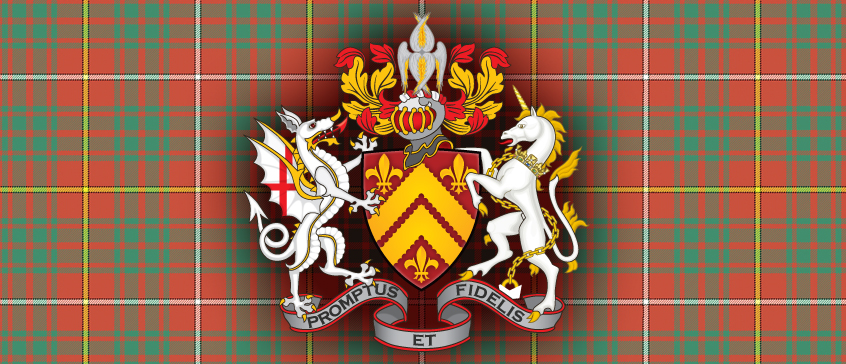









 North Berwick Harbour. Currently a haven for tourists and boats bringing them to the Bass Rock, this once tidal peninsula formed an important crossing for pilgrims to St Andrews. But on Halloween of 1590, the remains of St Andrew’s Auld Kirk, now situated in front of the Scottish Seabird Centre, provided the backdrop for one of the most notorious witches’ covens.
North Berwick Harbour. Currently a haven for tourists and boats bringing them to the Bass Rock, this once tidal peninsula formed an important crossing for pilgrims to St Andrews. But on Halloween of 1590, the remains of St Andrew’s Auld Kirk, now situated in front of the Scottish Seabird Centre, provided the backdrop for one of the most notorious witches’ covens. In short, the story of the witches’ gathering in North Berwick is this: a group of East Lothian men and women, some of them well-respected members of society, had been gathering at various locations in the county. Many of them were interested in herbal medicine, most of them likely gathered purely for social reasons. But after their gathering in North Berwick, on Halloween 1590, they were accused of conspiring to do damage to King James VI during his voyage from Denmark with his new bride, Queen Anne. Indeed, their ship was caught in a terrible tempest and although the royal couple escaped, the storm was blamed on the group of witches that had met in North Berwick.
In short, the story of the witches’ gathering in North Berwick is this: a group of East Lothian men and women, some of them well-respected members of society, had been gathering at various locations in the county. Many of them were interested in herbal medicine, most of them likely gathered purely for social reasons. But after their gathering in North Berwick, on Halloween 1590, they were accused of conspiring to do damage to King James VI during his voyage from Denmark with his new bride, Queen Anne. Indeed, their ship was caught in a terrible tempest and although the royal couple escaped, the storm was blamed on the group of witches that had met in North Berwick.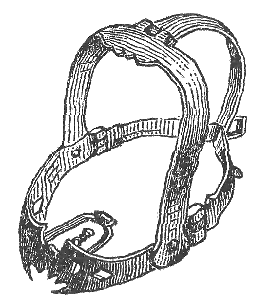 Another device that was used on witches either already tried or awaiting trial was the ‘Scold’s Bridle’. A metal device that fit around the head and had metal protrusions that would slide into the victim’s mouths making it impossible to talk. Sometimes men would use these devices on errant wives who nagged them too often. But they were often used on witches.
Another device that was used on witches either already tried or awaiting trial was the ‘Scold’s Bridle’. A metal device that fit around the head and had metal protrusions that would slide into the victim’s mouths making it impossible to talk. Sometimes men would use these devices on errant wives who nagged them too often. But they were often used on witches.






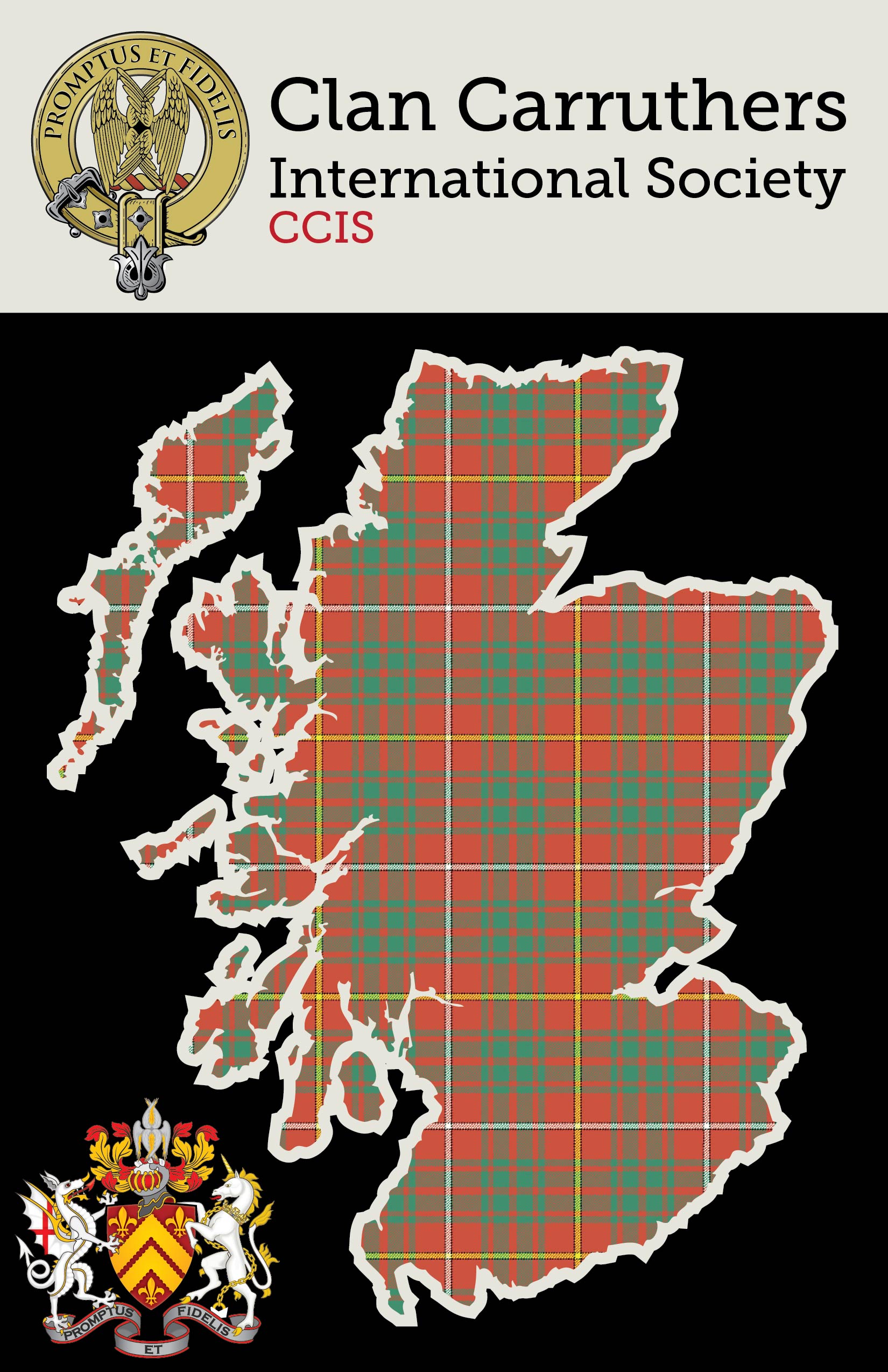



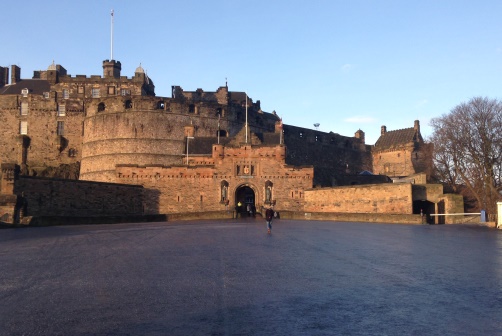

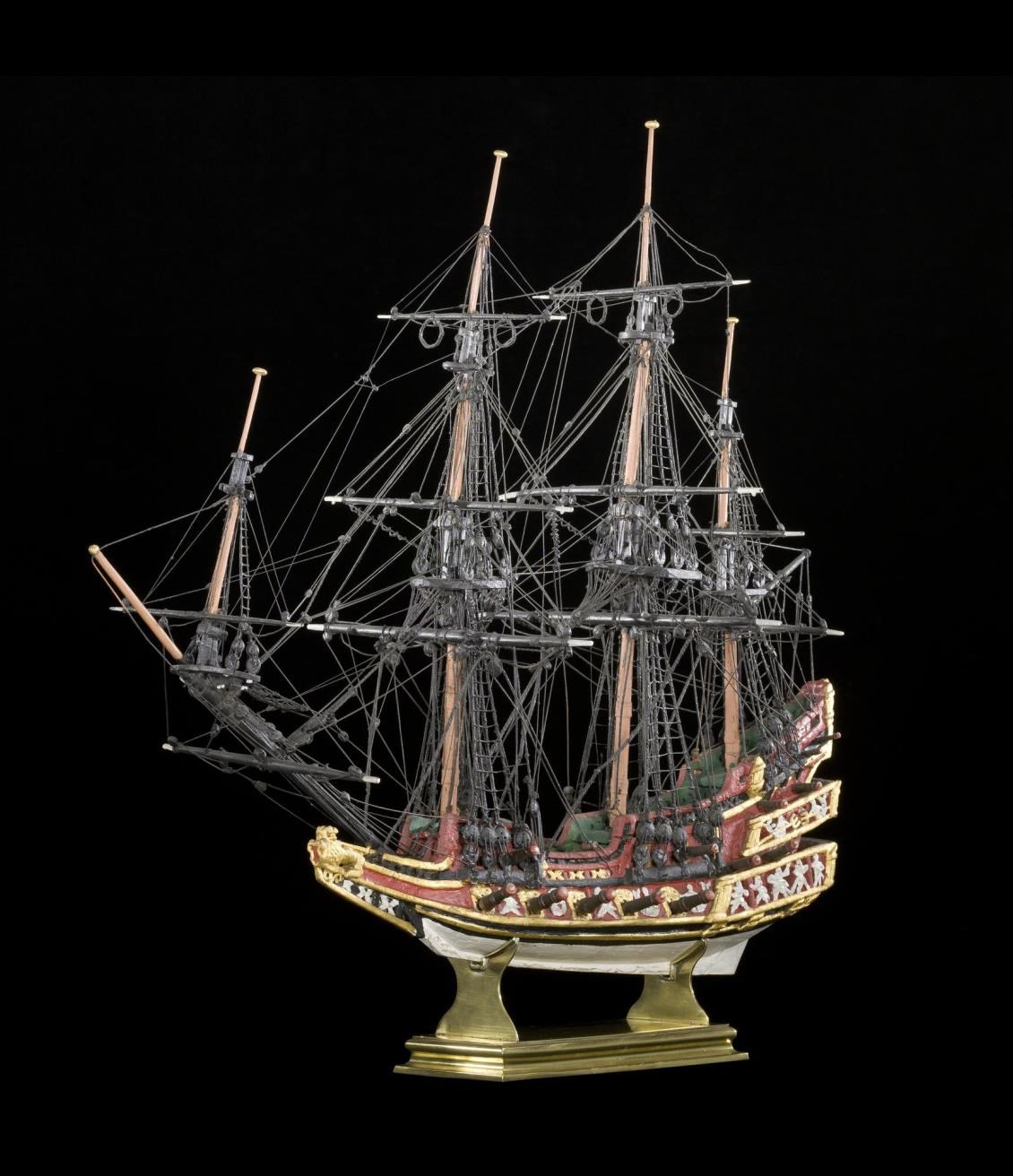
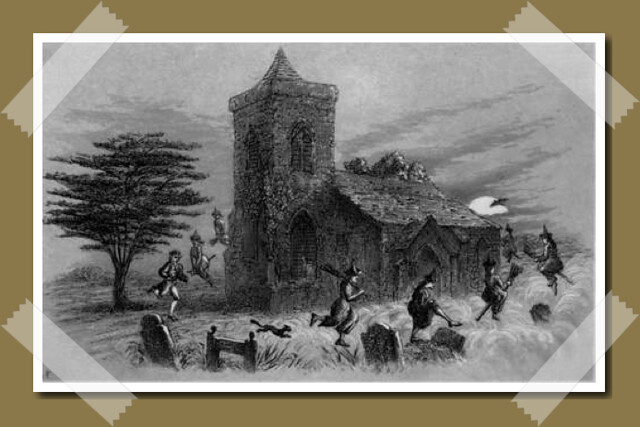
 Agnes Sampson was taken to Holyrood Palace, where she was interrogated and tortured. On December 7, Agnes Sampson confessed that on October 31, she was one of the witches that convened in North Berwick for a Sabbath. In contemporary correspondence, it reads that “The King ‘by his owne especiall travell’ has drawn Sampson, the great witch, to confess her wicked doings, and to discover sundry things touching his own life, and how the witches sought to have his shirt or other linen for the execution of their charmes. In this Lord Claud and other noblemen are evill spoken of. The witches known number over thirty, and many others accused.” And: “Their actes are filthy, lewde, and phantasticall.” The guilty verdict was based partly on the fact that, “[She] foreknew from Devil the queen would not come to this country unless the king fetched her”.
Agnes Sampson was taken to Holyrood Palace, where she was interrogated and tortured. On December 7, Agnes Sampson confessed that on October 31, she was one of the witches that convened in North Berwick for a Sabbath. In contemporary correspondence, it reads that “The King ‘by his owne especiall travell’ has drawn Sampson, the great witch, to confess her wicked doings, and to discover sundry things touching his own life, and how the witches sought to have his shirt or other linen for the execution of their charmes. In this Lord Claud and other noblemen are evill spoken of. The witches known number over thirty, and many others accused.” And: “Their actes are filthy, lewde, and phantasticall.” The guilty verdict was based partly on the fact that, “[She] foreknew from Devil the queen would not come to this country unless the king fetched her”. The problem of the North Berwick witch trials, however, is that they were political expedient. And that innocent people were tortured and killed for a political, kingly agenda. Walter Ferrier in his history of North Berwick wrote: “King James VI had been spending the summer of 1590 in Denmark, wooing and winning his bride, Princess Anne of Denmark. […] While the king was absent from Scotland, Francis Stuart, Earl of Bothwell, had been leading a conspiracy against him and his bride. […] He had always been something of an enfant terrible and was a convinced believer in the witch’s art. Such as there is in the North Berwick “happening” suggests that Francis was motivated by a desire to get the King and his bride out of the way, believing that he could by witchcraft raise a storm in the estuary of the Forth, thus hopefully to wreck the king’s ship with both its royal occupants as they sailed into home waters.” Though I agree with Ferrier that there was a clear political rivalry, there is no historical information that Bothwell was interested in witchcraft or might have believed that he could raise a storm fierce enough to crash the king’s ship. So who is right? When the trial transcripts and confessions are analysed, it is clear that these people indeed had gathered on a number of occasions that year, like one previous meeting that had been held at Prestonpans. But it is also clear that they did not gather to perform witchcraft. At most, these were the New Agers of their time, people with an interest in herbal medicine, convening to talk about interesting subjects, and like.
The problem of the North Berwick witch trials, however, is that they were political expedient. And that innocent people were tortured and killed for a political, kingly agenda. Walter Ferrier in his history of North Berwick wrote: “King James VI had been spending the summer of 1590 in Denmark, wooing and winning his bride, Princess Anne of Denmark. […] While the king was absent from Scotland, Francis Stuart, Earl of Bothwell, had been leading a conspiracy against him and his bride. […] He had always been something of an enfant terrible and was a convinced believer in the witch’s art. Such as there is in the North Berwick “happening” suggests that Francis was motivated by a desire to get the King and his bride out of the way, believing that he could by witchcraft raise a storm in the estuary of the Forth, thus hopefully to wreck the king’s ship with both its royal occupants as they sailed into home waters.” Though I agree with Ferrier that there was a clear political rivalry, there is no historical information that Bothwell was interested in witchcraft or might have believed that he could raise a storm fierce enough to crash the king’s ship. So who is right? When the trial transcripts and confessions are analysed, it is clear that these people indeed had gathered on a number of occasions that year, like one previous meeting that had been held at Prestonpans. But it is also clear that they did not gather to perform witchcraft. At most, these were the New Agers of their time, people with an interest in herbal medicine, convening to talk about interesting subjects, and like. Following the North Berwick witch trials, the records of the Scottish courts started to show increasing numbers of people being accused of witchcraft. In 1597, Janet Stewart of Canongate and Christian Livingston of Leith were accused of casting spells on Thomas Guthry. They were sentenced to be executed on the Castle Hill. The Kirk records of South Leith show many trials occurring in their parish. This included the search for the devil’s mark on bodies by a man from Musselburgh who had a reputation for finding these marks. The usual trial was to find blue or red birthmarks and to burn them with a hot iron or to insert a pin or needle. If the victim felt no pain then they were declared a witch. Suspected people were bled at between the eyes, which was supposed to make a witch powerless. If found guilty, the victim was burned alive. It is apparent that James VI had created a reign of terror, in which anyone could suddenly be accused of being a devil worshipper, based on no evidence whatsoever. Though the North Berwick witch trials are primarily linked with James VI, others have argued that the Reformation had given those who practiced the old Celtic ways an impetus to gather more freely than before, in the mistaken belief that there was now more religious freedom. That turned out to be not the case. Before 1563, witchcraft had been dealt with by the Church, but in 1563, the witchcraft act was passed, and it is this act that would see its first full use in 1590. And history has shown that such a perverse act, whether used by the Church or by the king, will be abused.
Following the North Berwick witch trials, the records of the Scottish courts started to show increasing numbers of people being accused of witchcraft. In 1597, Janet Stewart of Canongate and Christian Livingston of Leith were accused of casting spells on Thomas Guthry. They were sentenced to be executed on the Castle Hill. The Kirk records of South Leith show many trials occurring in their parish. This included the search for the devil’s mark on bodies by a man from Musselburgh who had a reputation for finding these marks. The usual trial was to find blue or red birthmarks and to burn them with a hot iron or to insert a pin or needle. If the victim felt no pain then they were declared a witch. Suspected people were bled at between the eyes, which was supposed to make a witch powerless. If found guilty, the victim was burned alive. It is apparent that James VI had created a reign of terror, in which anyone could suddenly be accused of being a devil worshipper, based on no evidence whatsoever. Though the North Berwick witch trials are primarily linked with James VI, others have argued that the Reformation had given those who practiced the old Celtic ways an impetus to gather more freely than before, in the mistaken belief that there was now more religious freedom. That turned out to be not the case. Before 1563, witchcraft had been dealt with by the Church, but in 1563, the witchcraft act was passed, and it is this act that would see its first full use in 1590. And history has shown that such a perverse act, whether used by the Church or by the king, will be abused.
You must be logged in to post a comment.